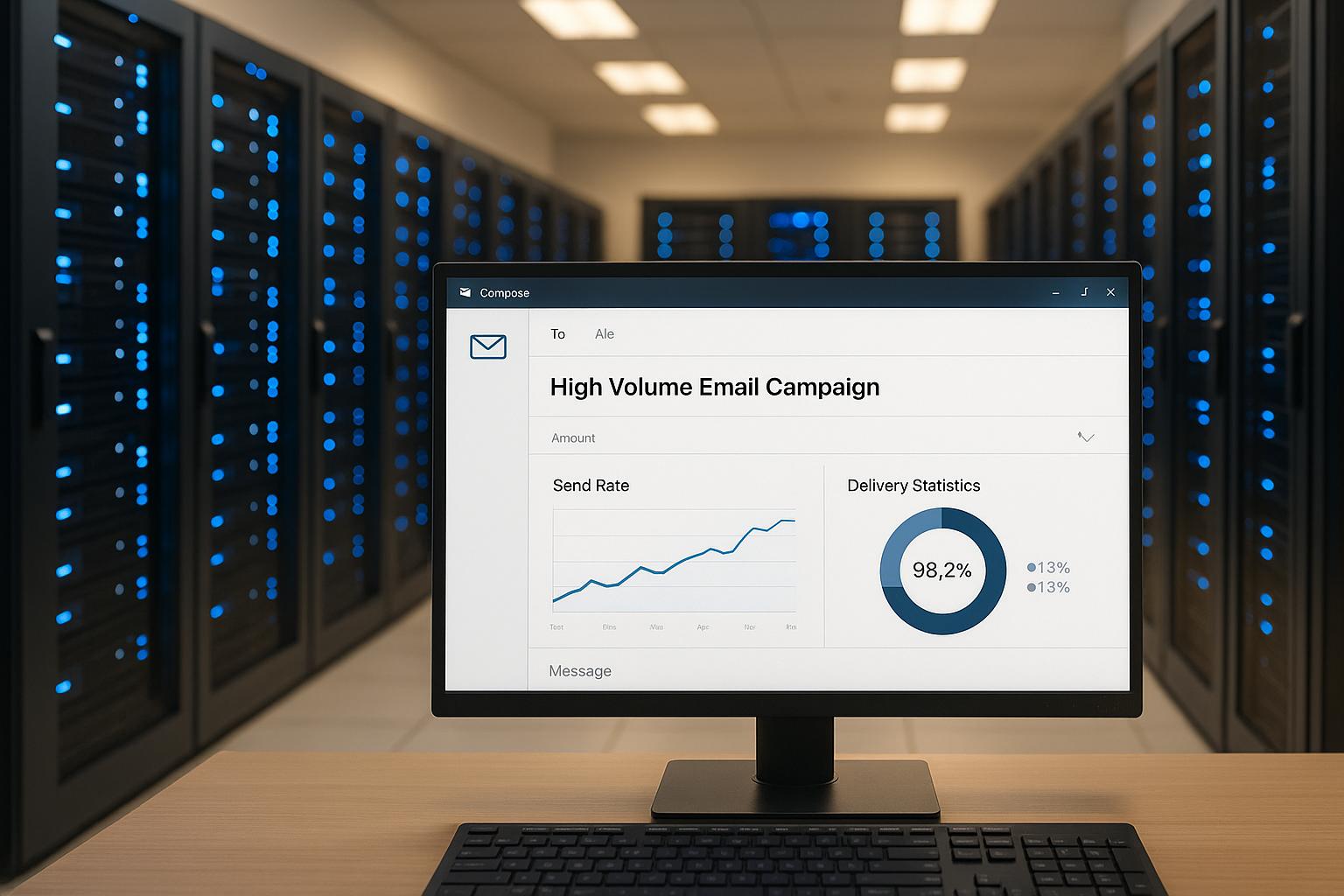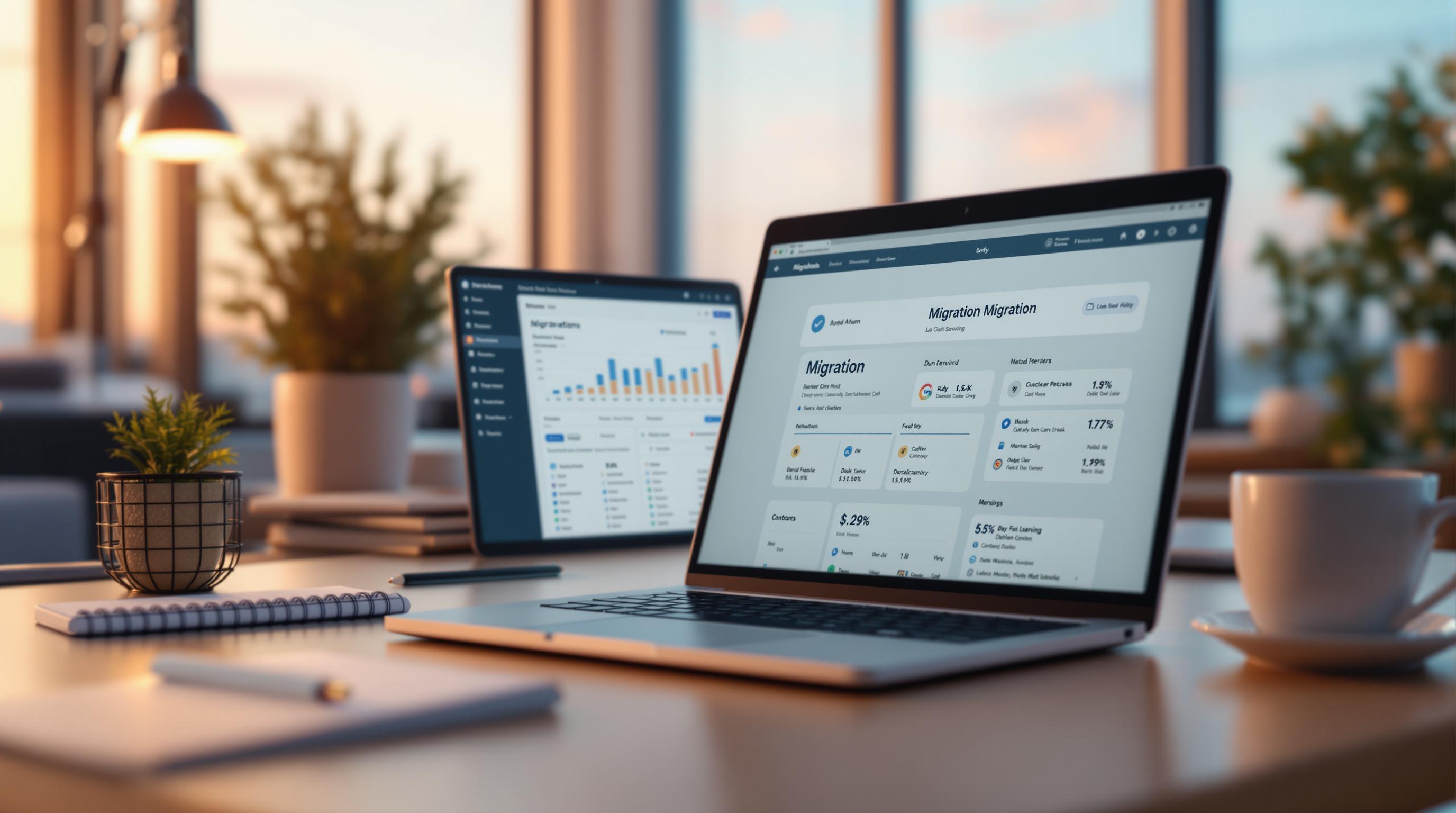Email open rates are changing in 2025. Privacy rules, personalization, and user behavior are reshaping how industries like healthcare, retail, and non-profits engage audiences. Here’s what you need to know:
- Non-profits lead with the highest open rates due to engaged donors.
- Healthcare follows, benefiting from personalized messages like reminders.
- Retail and e-commerce struggle with lower rates due to promotional overload.
- Privacy updates, like Apple’s Mail Privacy Protection, make tracking open rates less reliable. Marketers now focus on clicks and conversions.
- Personalization is key: dynamic subject lines, send-time optimization, and tailored content drive engagement.
- Mobile-first design and clear messaging are essential to stand out in crowded inboxes.
Quick Tips to Improve Open Rates:
- Clean your email lists with tools like Debounce for better accuracy.
- Optimize send times using scheduling tools.
- Personalize subject lines and content for relevance.
- Warm up your domain to improve deliverability.
To succeed, focus on clean data, personalized content, and technical improvements while adapting to privacy changes.
How to accurately analyze your email open rates
Email Open Rate Statistics by Industry (2025)
Here's a look at how email open rates are shaping up across U.S. industries in 2025.
Industries Leading and Lagging
Non-profits take the lead in open rates, driven by donors who actively engage and look forward to meaningful updates. Healthcare comes next, benefiting from personalized messages like appointment reminders and health tips. On the other hand, industries like retail, e-commerce, marketing, and advertising face challenges due to frequent email blasts and overcrowded promotional inboxes. These differences boil down to four key factors:
What Drives Open Rate Differences
- Audience engagement: Subscribers to mission-focused organizations are more likely to open emails they find valuable.
- Content relevance: Emails with personalized, useful content tend to outperform generic promotions.
- Email frequency: Sending too often can lead to fatigue, while a balanced approach keeps readers interested.
- Segmentation: Targeting specific groups with tailored messages helps improve both open and click rates.
sbb-itb-6e7333f
Major Changes in Email Open Rates (2025)
In 2025, three key factors - privacy rules, personalization, and shifting user behavior - are reshaping email open rates.
Impact of New Privacy Rules
Privacy updates have altered how marketers track email performance. For instance, Apple's Mail Privacy Protection has made open rate tracking less reliable. Now, marketers focus on metrics like click-through and conversion rates instead. Industries like healthcare rely more on compliance-driven metrics, while retail prioritizes conversions over opens. This shift explains why healthcare open rates have remained stable despite stricter tracking limitations.
Personalization strategies have also become essential for boosting engagement.
Personalization
The most effective email campaigns now include:
- Dynamic subject lines that adapt to individual preferences
- Send-time optimization, ensuring emails arrive at the right time based on recipients' time zones
- Custom content tailored to specific industries and interests
Finally, changes in user behavior are influencing email design and delivery strategies.
Changes in User Behavior
With mobile usage continuing to climb, responsive and concise email templates are now a must. Advanced inbox filters have made sender reputation and engagement signals more critical than ever. Recipients make snap decisions about whether an email is worth their time, so clear, value-focused messaging is key to standing out in crowded inboxes.
Tips for U.S. Email Marketers
Here are practical strategies for U.S. marketers to improve open rates using insights from industry data and the Email Service Business Directory.
To turn the 2025 benchmarks into actionable plans, focus on targeted approaches.
Setting Goals with Industry Data
Compare your historical open rates to industry averages. Track not only opens but also click rates and replies to address privacy-related challenges. Segment your email lists based on lifecycle stage, purchase behavior, or engagement levels for better targeting.
Tools from Email Service Business Directory
| Tool Category | Key Solutions | Purpose |
|---|---|---|
| Email Validation | Debounce, EmailListVerify | Real-time list cleaning; ensures high accuracy |
| Automation | SmartReach, Mailercloud | AI-powered personalization |
| Deliverability | GlockApps, MailMonitor | Tests inbox placement; analyzes deliverability |
| Tracking & Scheduling | SalesHandy, MailTag | Provides engagement insights |
| Warm-up | Lemwarm | Builds domain reputation |
Steps to Improve Open Rates
To address privacy changes and shifting engagement trends in 2025, follow these steps:
- Clean your email lists with tools like Debounce and EmailListVerify to reduce bounce rates. Debounce provides real-time validation with over 99% accuracy.
- Optimize send times using tools like SalesHandy to identify when your audience is most likely to engage.
- Personalize subject lines and content using SmartReach or Mailercloud for a tailored experience.
- Warm up your domain with Lemwarm to gradually increase sending volume and improve inbox placement.
Debounce provides real-time email validation with over 99% accuracy.
Summary: 2025 Email Open Rate Findings
The 2025 email open rate trends highlight the impact of new privacy regulations, advanced personalization techniques, and changing user habits. Performance varies widely across industries, influenced by factors like audience engagement, content quality, and how often emails are sent. To stay effective, email marketers need to adjust their strategies to align with these shifts. The findings show that success relies on blending technical improvements with personalized messaging.
Key areas to focus on include:
- Data quality: Regularly validate your contact lists to improve deliverability.
- Personalization: Leverage AI tools to create messages that resonate with your audience.
- Technical optimization: Monitor your domain reputation to ensure emails land in inboxes.
For additional support, check out the Email Service Business Directory to compare top platforms. U.S. marketers should aim for achievable goals, run frequent tests, and stay informed about privacy regulations.


